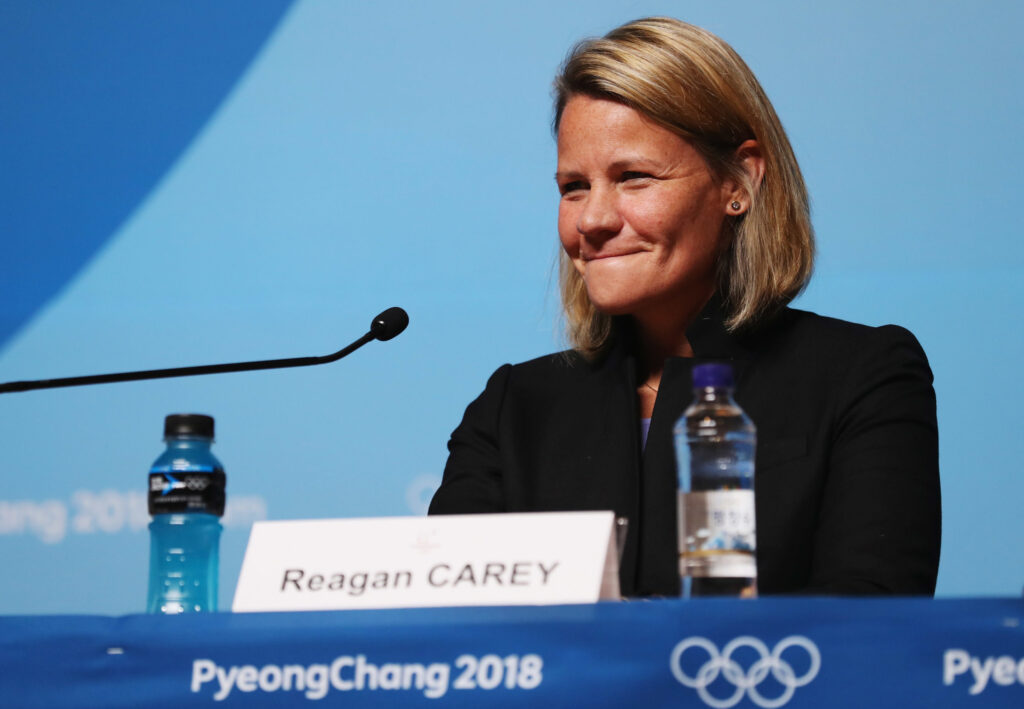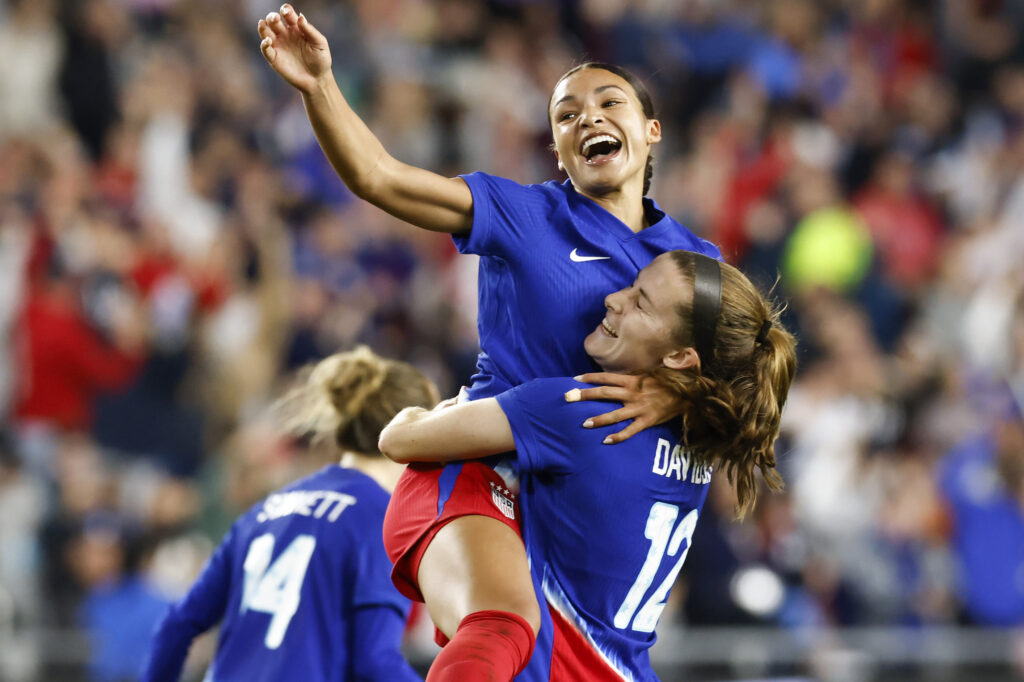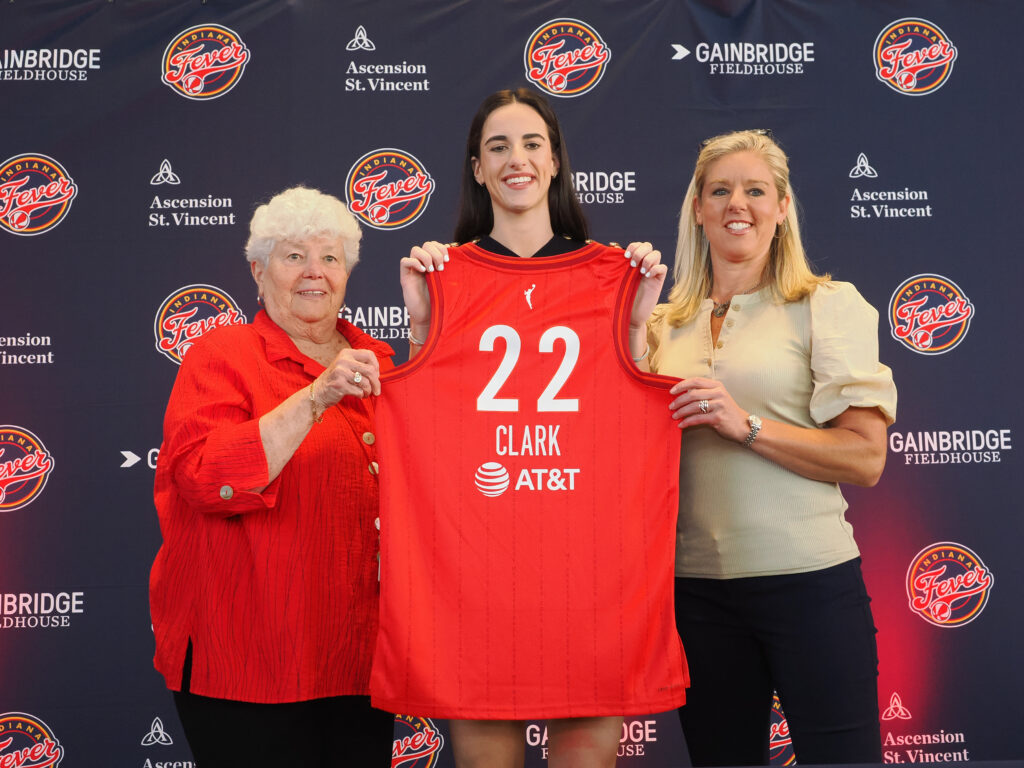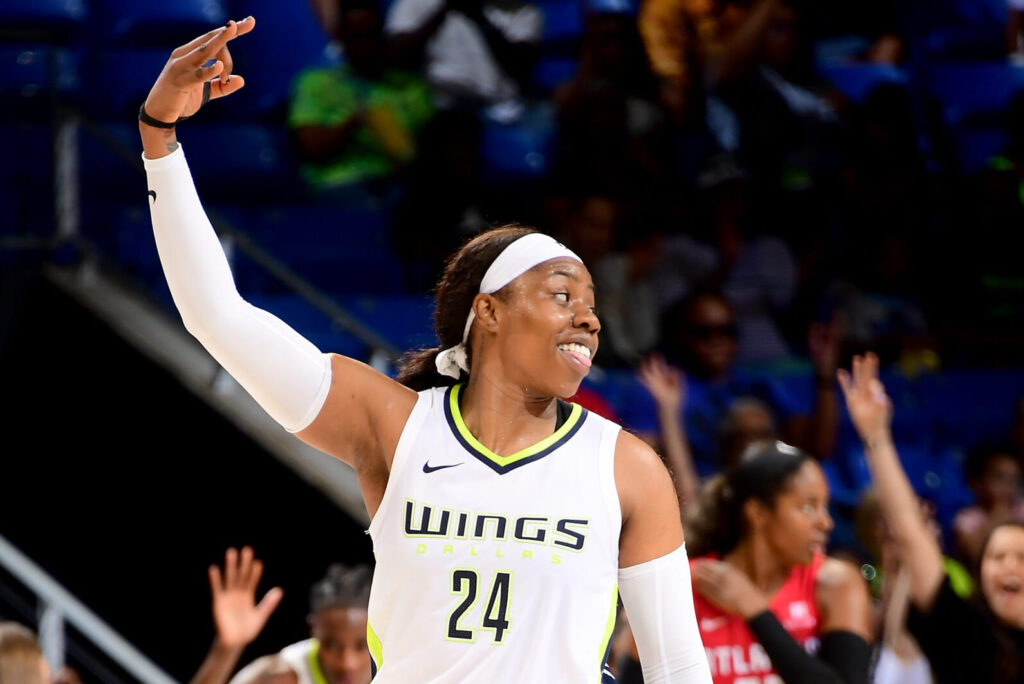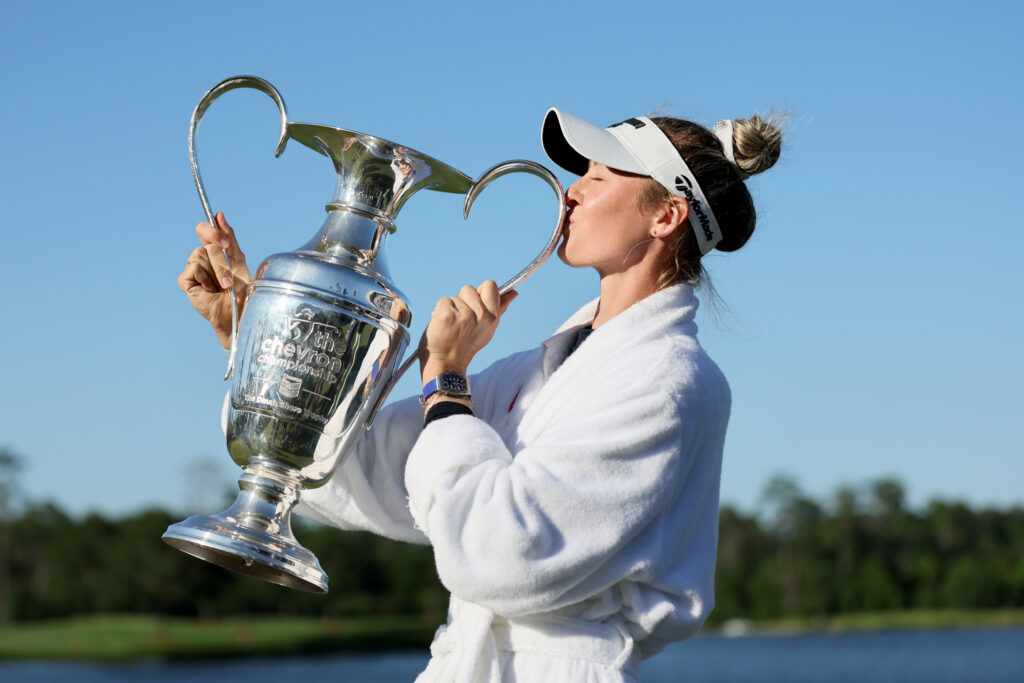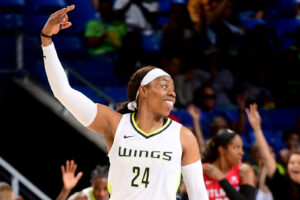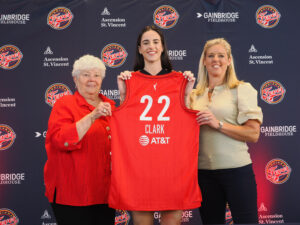As Kacey Bellamy reached the end of her playing career, she knew she wanted to stay involved in women’s hockey. So when the chance came to work for the Premier Hockey Federation, it was too good for her to pass up.
The former U.S. women’s national team player and three-time Olympic medalist joined the PHF as a scout and player relations liaison in May.
“It’s a wonderful opportunity to continue to help grow women’s hockey at a professional level,” Bellamy told Just Women’s Sports.
As an added bonus, she once again gets to work with Reagan Carey, who was named PHF commissioner in April.
Carey and Bellamy are no strangers to one another. Carey served as USA Hockey’s director of women’s hockey from 2010-18, helping the team to an Olympic silver medal in Sochi in 2014 and a gold medal in PyeongChang in 2018. Bellamy played for both those teams.
“I wanted to jump on board because I know that [Carey] is one hundred percent fully invested in trying to make this the league to be in and she’s not gonna stop until she gets there,” Bellamy said. “I saw what she did with the national team from 2010 to 2018 to get to the end goal of winning a gold medal, and that was just setting expectations, holding people accountable, building this culture of, we’re not gonna expect anything less than giving it a 100 percent.”
Carey sees that same drive in Bellamy, and she looks for it in all her hires. Take Melody Davidson, whom Carey brought on as the director of hockey operations in May, as an example. A former head coach and general manager for the Canada women’s national team, Davidson helped the team win four straight gold medals, including in 2014 against Carey’s Team USA.
“There’s a lot to be said for people that go out and get it done and win,” Carey told Just Women’s Sports in early June.
We’ve got a tall order, but we’re out there doing it.
The Premier Hockey Federation aims to be just what its name says: a premier destination for professional hockey. The league is positioning itself as such after a decade of explosive growth and change in the women’s game.
The PHF entered the scene in 2015 as the National Women’s Hockey League, and despite early clashes with the now-defunct Canadian Women’s Hockey League and some recent turmoil at the team level, the league is cementing itself as an option for athletes to continue their careers after college.
Bellamy will help athletes navigate that journey. In her role for the PHF, she’ll be tasked with establishing relationships with college players and coaches and ensuring open lines of communication between players and the league.
In 2017, the U.S. women’s hockey team was one of the first national teams across sports to begin the fight for equal pay. Having found herself in the middle of that fight, Bellamy understands the importance of her role as a player liaison.
“It’s so important to have someone that you trust and that you can talk to, not just someone in the league, but someone who’s been through several Olympics, fighting for equality and all the things that we’ve experienced as a group,” Bellamy said.
She wants “to give my advice in any way, shape or form that I can to help these girls feel confident and comfortable and help them in their decision to hopefully join the league,” she continued.
Increased player salaries should help Bellamy make her case to prospective athletes.
In February, the PHF’s Board of Governors announced a $25 million investment. As a result ,the salary cap for the six-team league has increased to $750,000 per team for the upcoming season.
Mikyla Grant-Mentis is one of those players reaping the benefits of the investment. Her one-year, $80,000 deal with the Buffalo Beauts makes her the highest-paid women’s professional hockey player.
As other players negotiate salaries, transparency will be key. The salary cap floor is $562,500 for the upcoming season, and the minimum salary for players is $13,500.

While the league does not publicly disclose salaries, there is an unofficial spreadsheet circulating that details player’s salaries, compiled by The Ice Garden’s Mike Murphy.
At the same time, the league and players’ association are holding discussions and paying special attention to players’ voices.
“Everyone appears to be on the same page,” PHFPA executive director Nicole Corriero told NBC’s Alex Azzi in a statement. “We acknowledge the benefits to having such disclosure take place, including empowerment, transparency and accountability. We also appreciate that each player’s individual circumstances are different and want to ensure we respect their ability to opt out if that is their preference.”
At the league level, Carey acknowledges that, while they’re moving in the right direction to get player’s salaries to where they want them to be, there’s more work to be done.
“Until we get further down the line in this process, we’re going to be very mindful of the players that aren’t at the top of that salary grouping so that we can ensure that their experience is just as great in other ways,” Carey said. “We’ve got a tall order, but we’re out there doing it and making it happen with the intent on improving upon it every season.”
I think the sky’s the limit for this league.
Meanwhile, a competitor also has been gaining steam. The Professional Women’s Hockey Players Association (PWHPA) is preparing to form its own six-team league and debut in January 2023.
Carey, though, isn’t worried about the PHF’s position. In fact, she respects the PWHPA for trying to grow the game.
“Anybody that is supporting the growth of women’s hockey, regardless of the jersey and logo they’re wearing on the front of their jersey, they’re a teammate in my eyes,” she said. “They’re doing what they can to grow the sport and in ways that they feel is best.
“There’s nothing but a positive and respectful lens on that, from my standpoint.”
Carey likens the relationship between the PHF and the PWHPA to that of the relationship between the U.S. and Canada national teams. While fans have seen the rivalry come to fruition on the ice, there’s also been collaboration behind the scenes in efforts to lift women’s hockey to its current status.

“It’s a great rivalry, but at the same time in order to grow the game and to support the sport, we had to work together to make sure that we were creating opportunities to grow our sport,” Carey said of her time with Team USA.
No matter how the PWHPA’s plans shake out, Carey said she hopes the relationship between the PHF and the PWHPA will still allow the organizations to support one another and collaborate in some way.
Several players have made the jump from the PWHPA to the PHF this offseason, including Brittany Howard and U.S. Olympian Amanda Pelkey. The PHF remains committed to not only signing high-profile players, but building them up as well.
“I think right now we’re at a great position of starting to be able to bring in some big names because I really believe in the structure of this,” Bellamy said. “I think the sky’s the limit for this league.”
Emma Hruby is an Associate Editor at Just Women’s Sports.
